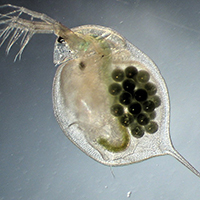Behavioural responses of juvenile Daphnia magna to two organophosphorus insecticides

Submitted: 18 March 2021
Accepted: 13 September 2021
Published: 7 October 2021
Accepted: 13 September 2021
Abstract Views: 2292
PDF: 324
Supplementary: 199
HTML: 147
Supplementary: 199
HTML: 147
Publisher's note
All claims expressed in this article are solely those of the authors and do not necessarily represent those of their affiliated organizations, or those of the publisher, the editors and the reviewers. Any product that may be evaluated in this article or claim that may be made by its manufacturer is not guaranteed or endorsed by the publisher.
All claims expressed in this article are solely those of the authors and do not necessarily represent those of their affiliated organizations, or those of the publisher, the editors and the reviewers. Any product that may be evaluated in this article or claim that may be made by its manufacturer is not guaranteed or endorsed by the publisher.
Similar Articles
- Armine Hayrapetyan, Gor Gevorgyan , Martin Schultze, Muhammed Shikhani, Termine Khachikyan, Aleksandr Krylov, Karsten Rinke, Contemporary community composition, spatial distribution patterns, and biodiversity characteristics of zooplankton in large alpine Lake Sevan, Armenia , Journal of Limnology: Vol. 81 No. s1 (2022): Lake Sevan. Past, present, and future state of a unique alpine lake
- Andrea Gall, Martin J. Kainz, Serena Rasconi, Daphnia magna fitness during low food supply under different water temperature and brownification scenarios , Journal of Limnology: Vol. 76 No. 1 (2017)
- Sameer M. Padhye, Alexey A. Kotov, Neelesh Dahanukar, Henri Dumont, Biogeography of the ‘water flea’ Daphnia O. F. Müller (Crustacea: Branchiopoda: Anomopoda) on the Indian subcontinent , Journal of Limnology: Vol. 75 No. 3 (2016)
- Sara Villa, Valeria Di Nica, Francesco Bellamoli, Tanita Pescatore, Claudia Ferrario, Antonio Finizio, Valeria Lencioni, Effects of a treated sewage effluent on behavioural traits in Diamesa cinerella and Daphnia magna , Journal of Limnology: Vol. 77 No. s1 (2018): Recent advances in the study of Chironomidae: An overview
- Valeria Rossi, Catia Maurone, Giorgio Benassi, Silvia Marková, Petr Kotlík, Nicolò Bellin, Ireneo Ferrari, Phenology of Daphnia in a Northern Italy pond during the weather anomalous 2014 , Journal of Limnology: Vol. 74 No. 3 (2015)
- Johann P. Müller, David Laloi, Claude Yéprémian, Cécile Bernard, Florence D. Hulot, To flee or not to flee: detection, avoidance and attraction of profitable resources by Daphnia magna studied with olfactometer , Journal of Limnology: Vol. 72 No. 3 (2013)
- Silvia Marková, Catia Maurone, Erica Racchetti, Marco Bartoli, Valeria Rossi, Daphnia diversity in water bodies of the Po River Basin , Journal of Limnology: Vol. 76 No. 2 (2017)
- Marina Manca, Michela Rogora, Nico Salmaso, Inter-annual climate variability and zooplankton: applying teleconnection indices to two deep subalpine lakes in Italy , Journal of Limnology: Vol. 74 No. 1 (2015)
- Slawek Cerbin, Łukasz Wejnerowski, Marcin Dziuba, Aphanizomenon gracile increases in width in the presence of Daphnia. A defence mechanism against grazing? , Journal of Limnology: Vol. 72 No. 3 (2013)
- Pierluigi Colangeli, Adam Cieplinski, Ulrike Obertegger, Filming of zooplankton: a case study of rotifer males and Daphnia magna , Journal of Limnology: Vol. 75 No. 1 (2016)
You may also start an advanced similarity search for this article.

 https://doi.org/10.4081/jlimnol.2021.2015
https://doi.org/10.4081/jlimnol.2021.2015





